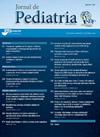视频干预对儿科患者出现谵妄的影响:随机对照试验的系统回顾和荟萃分析。
IF 2.8
4区 医学
Q1 PEDIATRICS
引用次数: 0
摘要
目的:儿科患者经常出现急诊谵妄。随着动画片、视频游戏和虚拟现实等基于视频的干预方法的发展,这些方法可能有助于降低儿童急诊谵妄的发生率。然而,支持其有效性的有力证据仍然是必要的:作者在多个数据库(包括 Embase、MEDLINE 和 Cochrane Library)中进行了系统性检索,以确定在儿科急诊谵妄中将视频干预与对照治疗进行比较的所有随机对照试验。使用Review Manager 5.4对数据进行汇总和分析,以评估视频干预的有效性:分析包括 8 项随机对照试验,共有 872 名儿童参与。干预组显示出降低小儿麻醉谵妄评分(p = 0.10)和减少谵妄事件(p = 0.52)的趋势。七项研究表明,基于视频的干预显著降低了术前焦虑,这体现在改良的耶鲁术前焦虑量表(Yale Pre-operative Anxiety Scale)得分的降低(p 结论:基于视频的干预与降低小儿麻醉术前焦虑有关:基于视频的干预与降低小儿麻醉术后谵妄评分和减少术后谵妄事件的发生率有关。然而,在更广泛的样本中,这些结果并未达到统计学意义。值得注意的是,这些干预措施显著降低了七岁以下儿童的评分:证据等级:III。本文章由计算机程序翻译,如有差异,请以英文原文为准。
Effect of video-based interventions on emergence delirium in pediatric patients: a systematic review and meta-analysis of randomized controlled trials
Objective
Emergence delirium is frequently observed in pediatric patients. With advancements in video-based interventions, such as cartoons, video games, and virtual reality, these modalities may contribute to a reduced incidence of emergency delirium among children. However, robust evidence supporting their efficacy remains necessary.
Methods
The authors conducted a systematic search across multiple databases, including Embase, MEDLINE, and Cochrane Library, to identify all randomized controlled trials comparing video-based interventions with control treatments in pediatric emergence delirium. Data were aggregated and analyzed using Review Manager 5.4 to evaluate the effectiveness of video-based interventions.
Results
The analysis included eight randomized controlled trials comprising 872 children. The intervention group showed a trend toward lower Pediatric Anesthesia Emergence Delirium scores (p = 0.10) and fewer emergence delirium events (p = 0.52). Seven studies demonstrated that video-based interventions significantly reduced preoperative anxiety, as indicated by decreased scores on the modified Yale Pre-operative Anxiety Scale (p < 0.00001). Anesthesia duration did not significantly differ between the intervention and control groups (p = 0.16). Notably, subgroup analyses revealed a significant reduction in Pediatric Anesthesia Emergence Delirium scores among children under seven years of age (p = 0.001).
Conclusions
Video-based interventions were linked to lower Pediatric Anesthesia Emergence Delirium scores and a decreased incidence of emergence delirium events. However, these results did not reach statistical significance across the broader sample. Notably, in children under seven, these interventions significantly reduced the scores.
Level of evidence
III
求助全文
通过发布文献求助,成功后即可免费获取论文全文。
去求助
来源期刊

Jornal de pediatria
医学-小儿科
CiteScore
5.60
自引率
3.00%
发文量
93
审稿时长
43 days
期刊介绍:
Jornal de Pediatria is a bimonthly publication of the Brazilian Society of Pediatrics (Sociedade Brasileira de Pediatria, SBP). It has been published without interruption since 1934. Jornal de Pediatria publishes original articles and review articles covering various areas in the field of pediatrics. By publishing relevant scientific contributions, Jornal de Pediatria aims at improving the standards of pediatrics and of the healthcare provided for children and adolescents in general, as well to foster debate about health.
 求助内容:
求助内容: 应助结果提醒方式:
应助结果提醒方式:


